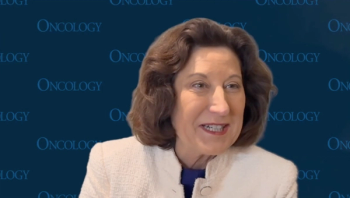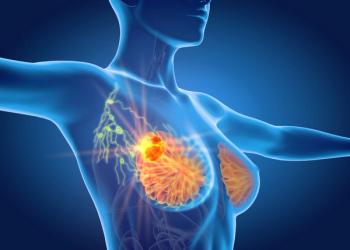
- Oncology Vol 28 No 1S
- Volume 28
- Issue 1S
(P146) Clinical Outcomes From Frameless Stereotactic Radiosurgery of Arteriovenous Malformations Using High-Resolution 3-Dimensional Rotational Angiography
Cerebral arteriovenous malformation (AVM) is defined as an abnormal collection of vessels with multiple enlarged feeder arteries and dilated venous outflow, associated with risks of blood shunting and hemorrhage. Treatment options include surgery, embolization, or stereotactic radiosurgery (SRS).
Christine N. Chang-Halpenny, MD, Javad Rahimian, PhD, Michael Girvigian, MD, Joseph Chen, MD, PhD, Michael Miller, MD, Alonso Arellano, MSc, Lei Feng, MD, Kenneth Lodin, MD; Kaiser Permanente
Purpose and Objective: Cerebral arteriovenous malformation (AVM) is defined as an abnormal collection of vessels with multiple enlarged feeder arteries and dilated venous outflow, associated with risks of blood shunting and hemorrhage. Treatment options include surgery, embolization, or stereotactic radiosurgery (SRS). SRS may be attractive as a safe, noninvasive treatment for small, deep lesions. While techniques and fused imaging modalities for SRS vary across institutions, we have found that 3-dimensional rotational angiography (3DRA) offers superior geometric accuracy. With a lag time of 1–3 years from SRS to complete obliteration, we are able to now report early data for clinical response for AVM lesions treated using 3DRA and image-guided radiosurgery (IGRS) based on our experience.
Materials and Methods: In 2002, our institution transitioned to the Novalis Extrac IGRS system, with which we have treated over 3,113 lesions. Since 2006, a total of 2,201 of them were treated via frameless IGRS. AVMs were initially excluded due to the need for cerebral angiography for localization, but in 2005, computed tomography angiography (CTA) and magnetic resonance angiography (MRA) were used. In 2009, we transitioned to 3DRA and have treated over 40 AVMs with this technique. Utilizing a phantom model, we have previously shown that 3DCRA offers better geometric accuracy compared with digital angiography orthogonal image pairs (0.27 ± 0.14 mm vs 0.39 ± 0.15 mm, respectively). We reviewed data on response to therapy based on clinical symptoms, events since SRS, and changes on subsequent imaging.
Results: Currently, results are available for 12 AVMs (10 patients) that had angiogram repeated 2–3 years following initial SRS date. Initial treatment included embolization for three, craniotomy for hematoma evacuation for two, and ventriculostomy with decompression for one case. SRS pretreatment volume ranged from 0.035 to 27.3 cc, although the majority had volumes ≤ 4 cc. Patients were given single-fraction SRS, with doses ranging from 1,556 to 2,250 cGy prescribed to isocenter using 4–5 arcs. Patients were seen in routine follow-up with serial magnetic resonance imaging (MRI) brain imaging. Angiogram was then repeated (either conventional or 3DRA) after appropriate time elapsed per clinician judgment. Overall, nine cases had complete resolution of AVM, one had stable-sized lesion, and three had smaller lesions. No patients experienced additional hemorrhage in the interval following SRS. For the four residual lesions, we fused 3DRA data for three using BrainLab. The residual AVM was contoured and compared against pretreatment contoured and treated AVM. We found that the residual size of all three AVMs was drastically decreased, with 85% to 98% resolution in size, including one of a very large lesion (from 27.313 cc to 3.066 cc).
Conclusions: To date, our results from patients treated with frameless SRS using high-resolution 3DRA and BrainLab treatment planning are encouraging, with the finding of either complete resolution or decrease in size of lesions treated. Furthermore, our results suggest good geometric accuracy using the 3DRA technique, given the small size of most of the lesions treated. Although there is lag time to evaluation to response, we anticipate forthcoming data from evaluation of additional patients treated with this modality to strengthen our current findings.
Articles in this issue
Newsletter
Stay up to date on recent advances in the multidisciplinary approach to cancer.















































































